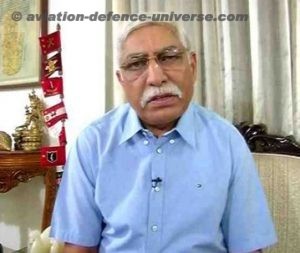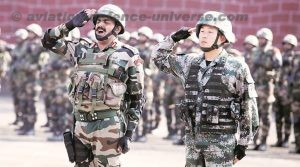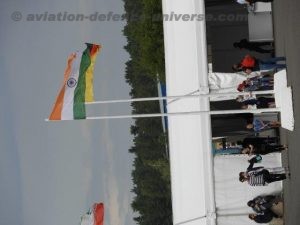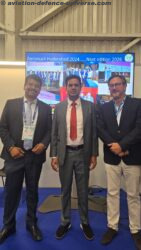By Lt Gen Vinod Bhatia, PVSM, AVSM, SM (Retd)
(The Article was first published by CENJOWS. Re-Published here with consent.)

New Delhi. 20 June 2020. On 17 June 2020, news of the casualties of Sino-Indian military clash in the Galwan Valley shocked India, Clausewitz’s ghost tweeted an ominous warning from his treatise “On War”- ‘Military forces in contact can acquire a logic of their own that could be disconnected from the political one’. In essence, the military tail can wag the political dog. China quickly promoted the tweet and said it was a military problem due to aggressive maneuvers by Indian troops. In reality, China was again back again to playing its favorite game of concealing political intentions behind deliberate military actions deceitfully described as defensive. The Indian Foreign Minister called the incident as ‘premeditated and planned action that was directly responsible for the violence and casualties’. It is one more instance among many of China being politically assertive and militarily aggressive.
The Galwan incident is indicative of China’s betrayal of political trust and an attempt to pass it off as a product of military dynamics that supposedly became untethered from political guidance. This fiction must be demolished an d seen in perspective which is evident in the Galwan incident. For the present situation was at a stage when diplomatic and political interaction had succeeded in an agreement on restoration of status quo at Galwan and Hot Springs, but had left out Pangong Tso. An understanding of the military process during the stage of executing the agreement on the ground can shine the light on China’s dirty tricks.
For the last couple of year, India has been building a track to facilitate patrolling up to Patrol Point 14, which is situated on the ridgeline through which India’s LAC runs. China had already constructed a road that was still a couple of kilometers short of the ridgeline. Due to terrain conditions, it is easier for the Chinese to access PP14 from their side but treacherous and difficult for Indians troops.
Simultaneous with intrusions at Finger 4 in Pangong Tso, Naku La, and Hot Springs, the PLA had crossed the ridgeline in Galwan and pitched tents. Hitherto fore they would rarely patrol up to the ridgeline. Indian patrols had discovered this intrusion in early May. China then alleged that it is India that has intruded and indicated that they now claim areas beyond the ridgeline that for all practical purposes was accepted as the LAC alignment by both sides.
The violent incident at Galwan followed the border talks at the level of Corps Commander, where the Chinese agreed to peacefully vacate the area. Following protocol, troops were sent to monitor the vacation. When the first party reached, the PLA not only refused to remove the tents but also brought more reinforcements. Though it was approaching dusk, when contact with the first party was lost, the Commanding Officer rushed in with reinforcement. China, breaking all protocols, laid an ambush on the unsuspecting troops which approached the PLA position and were on the Indian side of LAC. The PLA troops in a localised action pounced upon the soldiers with clubs, spikes, iron rods, indicating that this was preplanned. The troops despite carrying weapons, restrained from opening fire and matched the Chinese in hand to hand combat. Many soldiers suffered severe injuries and some died as they fell off the cliff, into the Galwan river. Indian troops suffered 20 Fatal fatalities including the Commanding Officer. They had held their own, against all odds inflicting many casualties on the PLA. Officially, PLA as is their norm has not given out any causality figures but several sources give figures of 30-40 Chinese dead. In another incident, probably on account of dark night ten Indian troops strayed across the LAC, later to come back unharmed.
Political trust is the major casualty of Galwan. It should now be obvious to the political leadership that any accommodation through a focus only on tackling military dynamics, is an eyewash that only creates incentives for China to indulge continuously in using the Sino-Indian border as a pressure point. China promotes the canard of it being a military problem, to hide its political maneuvers.
The Indian approach must move away from merely seeking to straighten out military face-offs, which is necessary, but certainly highly insufficient. We must seek a resolution that tackles the political issues which are the womb of military problems. Politically the first move must be the restoration of the status quo that prevailed before the present crisis that is followed by implementation of the agreement of 1993 regarding the identification of LAC. Till these conditions are met, India must roll out its actions on the political and diplomatic fronts that it intends to adopt. It must call out China’s perfidy and plug into the expanding number of nations that view China as a major threat to stability and peace.
For too long, our stance with China has emboldened it to continuously create situations that repeatedly and blatantly violate agreements, rolls out lies, deceit, deception, disinformation, falsehood, and misrepresentation and casts the blame on India. We should adopt a policy of responding to Salami Slicing with a speedy Quid Pro Quo in unheld areas and there are many of them. We should politically and diplomatically leverage China’s vulnerabilities in Xinjiang, Hong Kong, Taiwan, and Tibet. More importantly, dealing with an arrogant and a rising China must be animated by the power of the collective that must be aimed to protect against common threats and promote common interests. It is time India refrains from deceiving itself of China’s true nature, which in political terms is preserved by the CCP and not the people. With the Chinese people, India can have no enmity.
(Lt. Gen Vinod Bhatia (Retd.) is Director CENJOWS and former Director General of Military Operations(DGMO) Indian Army. The views in the article are solely the author’s. He can be contacted at editor.adu@gmail.com)






























































































































